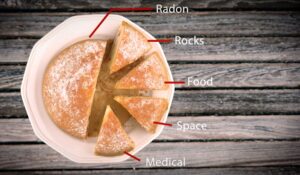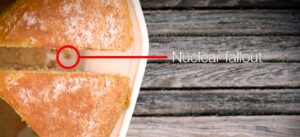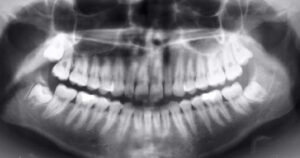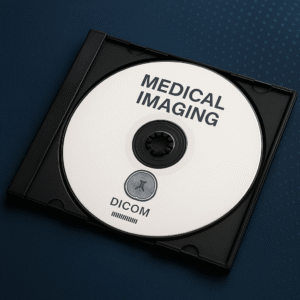Radiation is part of our lives. In its simplest form, radiation is a type of energy. It comes in lots of different forms but we’re going to look at ionizing radiation, which is radiation powerful enough to do damage to anything that gets in its way.
The risk to health from radiation depends how much you’re exposed to and over how long, usually referred to as a radiation dose.
And most scientists believe that all radiation exposure carries a risk but at low levels the risks are extremely small. You might be wondering where we’re all exposed to radiation and how.
When the earth was formed billions of years ago, it mopped up the leftovers of a supernova explosion and that included some very long-lived radioactive elements.
Some of those elements are still present in the rocks and soil that make up the earth today, so just by standing on the surface of the earth you get a small dose of radiation. Some of those rocks are also used in construction so that means we get another small dose from the buildings that we live in.
Add those two together and that makes up just over 10% of our annual radiation dose. By far our biggest chunk of exposure comes from a gas called radon.
Radon is created when naturally occurring uranium decays and changes into a radioactive gas.
This then seeps up through the rocks and accumulates in buildings. The amount of exposure varies hugely, dependent on local geology and even from house to house. You can’t completely cut out radon and because of this it makes up about half of your annual dose.
Every night people all over the world get out their telescopes and gaze into space.
But while they look up something else is coming down. Cosmic rays are particles that constantly flow from space to earth. As they travel through the atmosphere they lose some of their energy, but some still reach the ground where they interact with us.
The higher up you are, the greater your exposure. So people on planes or up mountains get a higher dose. Radioactivity occurs naturally in the ground so when plants and animals grow they absorb small amounts of this. It means that all of our food and drink from fruit and vegetables, to booze and burgers, contain tiny amounts of radioactivity, and overall it makes up about one-tenth of our annual dose. If you go into any dentist’s surgery, you’ll likely see below sign somewhere.
That’s because X-rays deliver a dose of radiation to patients. Radiation is also used in treatments like radiotherapy to treat some medical conditions. Although only a few of us will be treated or diagnosed with radiation in any one year, when you add up all of the exposure dose and average it, this makes up about 15% of our annual dose.
Here’s a cake. And just to recap – this is what it’s made up of.

This cake is our annual average radiation dose and it breaks down like this. Half of what we get comes from radon exposure. Some more comes from naturally-occurring gamma radiation coming to us from the ground. Others comes from food, space, medical exposures.
That crumb in below picture may not look like much but it makes up about half of 1% and represents our exposure to the radiation left in the atmosphere after nuclear weapons testing in the last century.

There’s another tiny contribution from the doses we all get because of the activities of industries which use radiation, like medical and nuclear. There’s another tiny contribution from the doses we all get because of the activities of industries which use radiation, like medical and nuclear. If you want to know more about radiation exposure, please visit our website for upcoming articles.






